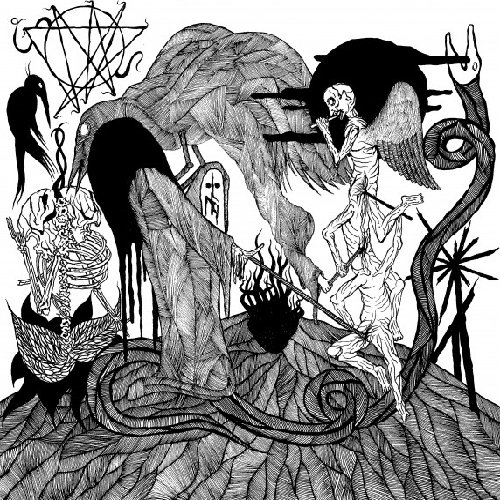
Dragged into Sunlight
Widowmaker
Release Date: Nov 6, 2012
Genre(s): Heavy Metal
Record label: Prosthetic Records
Music Critic Score
How the Music Critic Score works
Buy Widowmaker from Amazon
Album Review: Widowmaker by Dragged into Sunlight
Excellent, Based on 4 Critics
Based on rating 9/10
There isn't a great deal of aggressive music that profoundly disturbs the listener in a primitive, primal way, an aspect that causes the hair on the back of the neck to stand up and something deep in the pit of the gut to feel cold and sour. Dragged Into Sunlight are one of the few bands capable of producing music that feels genuinely dangerous. Their last full-length, Hatred for Mankind, was a lovely atrocity, but dwelt a little too much on the theatricality of evil, incorporating many sound bites and samples into the work, making it feel at once a bit slick and cluttered.
Based on rating 9/10
Over the past 40 years metal has stretched every possible “extreme” musical idea to the most illogical of conclusions. It has reached the point where impenetrable genres such as grindcore, death metal and black metal—all of which have prospered on being uncompromising and inaccessible in nature—have become popular, and in turn have lost the shock and horror of their youth. Hell, even the coruscating noise of artists like Merzbow and Whitehouse (who have been adopted by the metal community because of their musical extremity) and the laborious drone of Sunn o))) are now enjoyed by the more conservative metal listener; a possible result of our increasing exposure to the most avant-garde and extreme of acts discovered through different digital avenues.
Based on rating 4/5
To call Dragged Into Sunlight’s Widowmaker “black metal” does the album wrong. While the Liverpool quartet’s sophomore effort possesses much of the ominous atonality and despair of the subgenre, its three long-form tracks also contain the strung-out heartbreak of sludge, noise, and dark country. Opener “Part I” lacks distortion entirely, dragging its feet in a funeral march of twanging guitar and groaning violin.
Based on rating 6.2/10
Considered on image alone, Dragged into Sunlight might be the most fascinating new recruit within extreme metal for the better part of the last decade. Like bank robbers on a job or mercenaries on a mission, the British quartet appears uniformly in balaclavas; the holes in the fabric are invitations of intrigue about the minds, lives and pasts of the four anonymous members. And when they play live, the musicians turn their backs on the audience, closing themselves to the house to again invoke wonder about just what they’re doing.
'Widowmaker'
is available now

